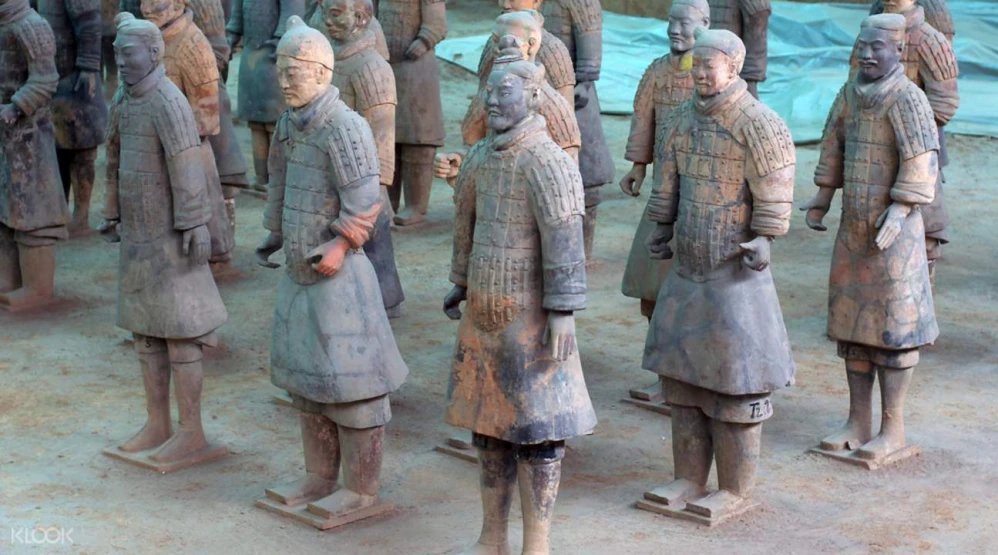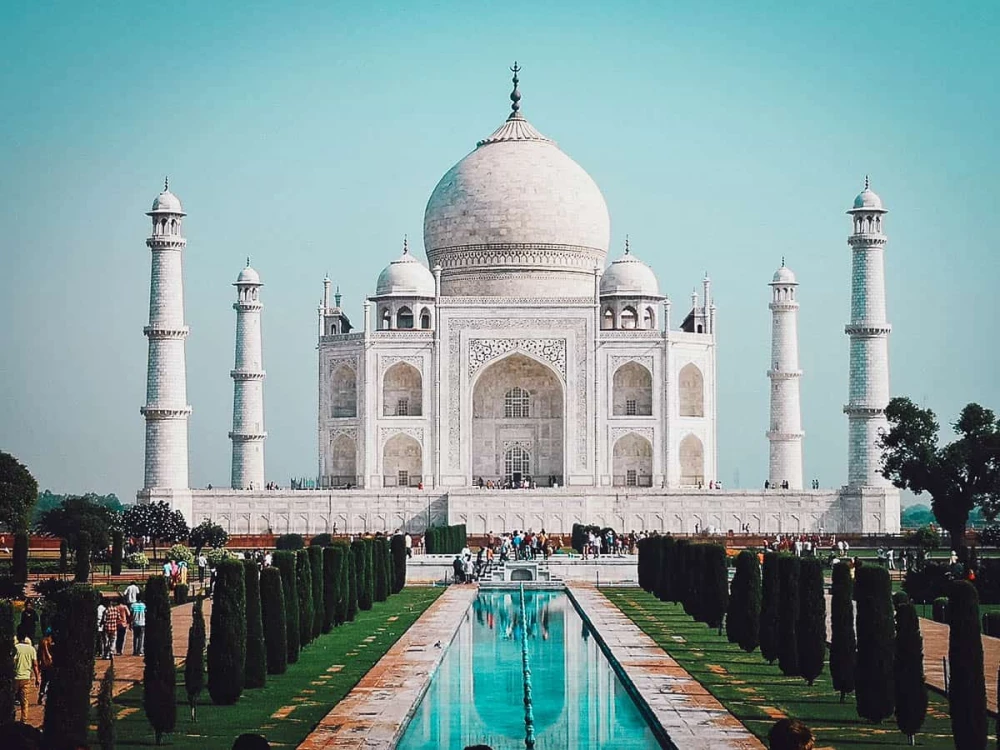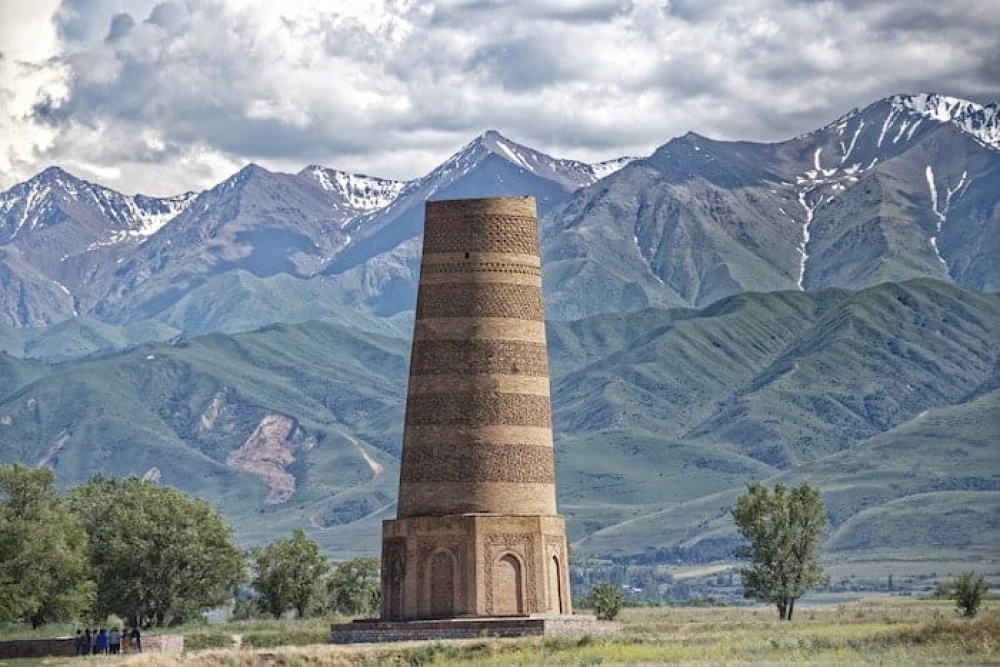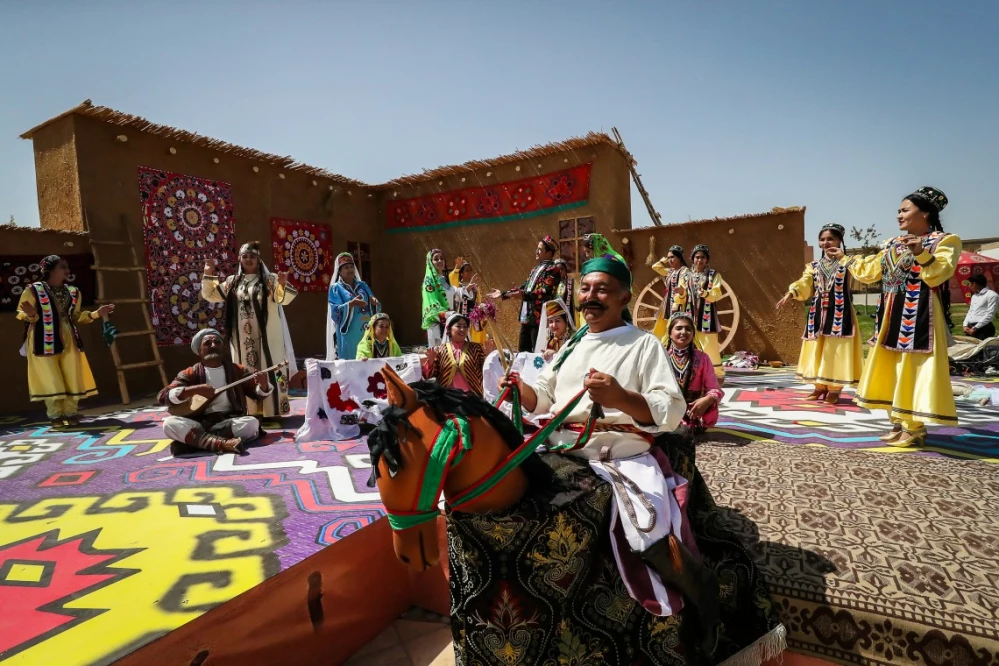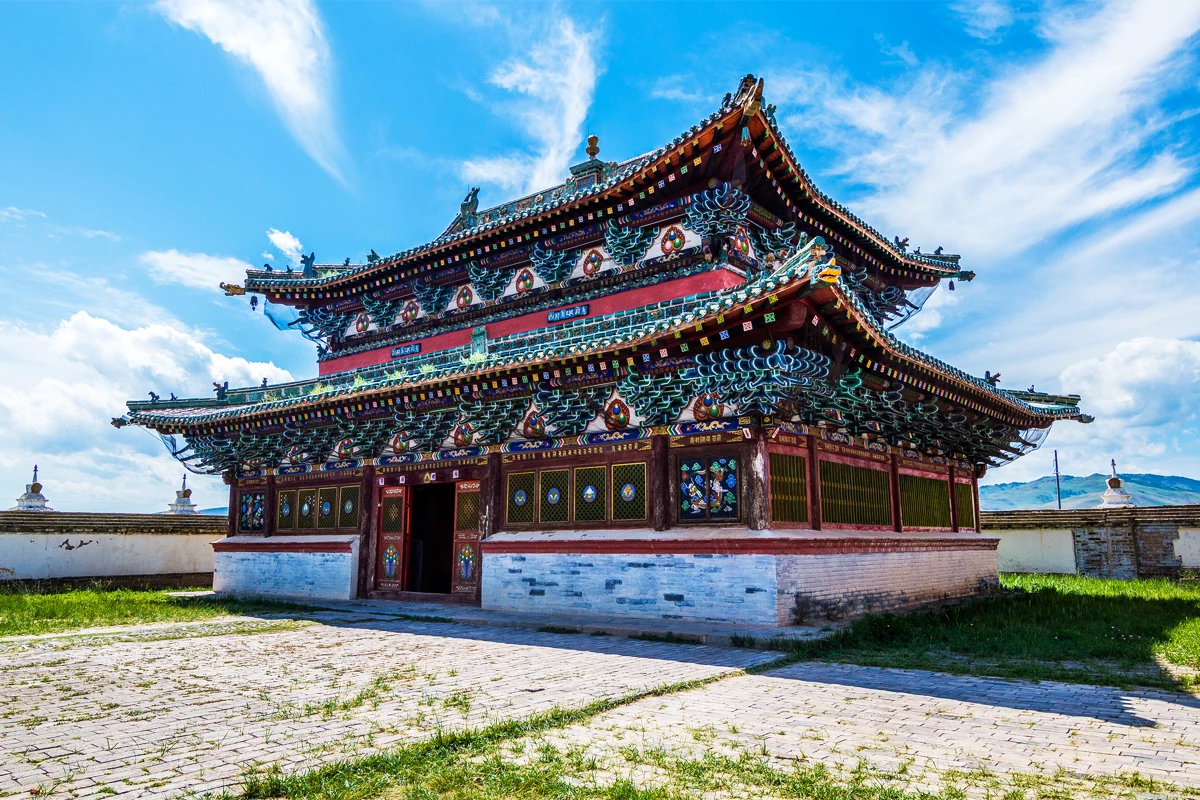
Mongolia
Region map
General information
Mongolia is half a planet away from the Western world; still, Mongolia’s ancient realms, rich cultural heritage, and abundant opportunities for outdoor enthusiasts compel adventure seekers and tourists alike to travel there. But while Mongolia may seem like the far edge of the world, once upon a time it was the very center of it. An empire grew here, and a culture, and a rule of law, and a way of life. Today, visitors to Mongolia may walk amid the ruins of Genghis Khan’s empire, witness the nomadic horse culture of the planet’s last unspoiled grassland wilderness, ply mountain streams for gigantic trophy fish, stroll ancient monasteries in contemplative silence, and search the plazas and alleys of cities growing to meet the influences of our modern world.
Adventure Asia offers a myriad of great adventures and excursions in Mongolians. You can can experience nomadic culture and vast, untouched landscapes.
Mongolia itineraries
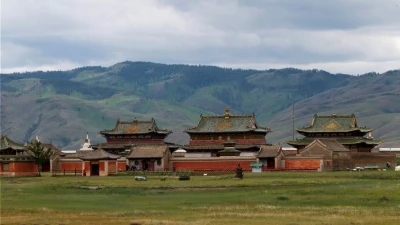
The Yak festival tour
The Yak festival is one of the most important festivals in Mongolia. Yak is considered the most productive animal as its milk and meat is nutritious, fur is warm and it can carry huge loads on its back. Mongolians use the yak for moving and fetching water. The programs in the yak festival are fascinating to see; yak polo, yak race, rodeos, and beauty contest. As always, Mongolians put their best traditional clothes on to come and participate in this festival. There are many surprises and entertaining activities, thus it has become a favorite local event. In addition to the fascinating yak festival, you will explore Ugii lake, and the Tuvkhun temple and relax in the hot springs of Tsenkher.
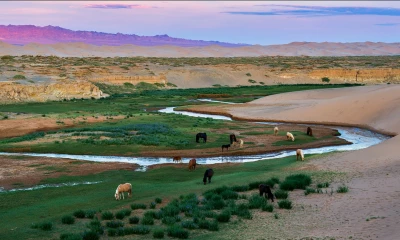
Orkhon Valley Trek
Throughout history, from prehistoric times up till the beginning of the last century, the Orkhon valley has been a major center of life for the Mongolians. Capital cities have risen and fallen, monks have meditated here, kings have been buried and nomads have settled their tents next to the water of the Orkhon river. We will be following the river past ancient monasteries, waterfalls and national parks. It is an amazing experience, you should be a part of it!
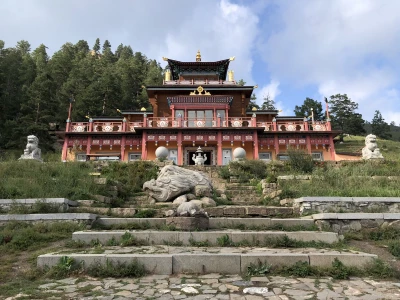
Diving in Mongolia
This trip is an amazing adventure you definitely don't want to miss! The highlight of this tour is, of course, the dive center. If you've never tried diving before, but are interested in what lies beneath the surface, there are a lot of opportunities for you to give it a go. Some other highlights of this tour include tasting the famous Mongolian barbecue in a traditional restaurant, visits to the National history museum, and the central square, and discovering the statue of Chinggis Khaan.
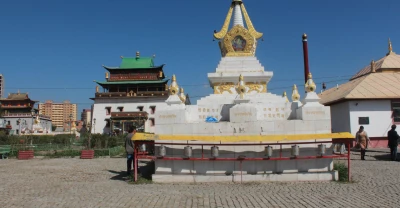
Into The Heart Of Mongolia
Mongolia as you imagine it! That of the steppes, yurts, and nomads, waiting for you in this 7-day trip to the heart of authentic Mongolia. Our trip starts with discovering the equestrian statue of Chinggis Khaan and meeting Terelj National Park, where the Siberian forests end surrounded by unique rock formations. Then take you to the heart of the Mongolian wilderness, watching mythical Przewalski wild horses. Then we will move through the vast lush steppes where you can observe the many scenes of rural life.
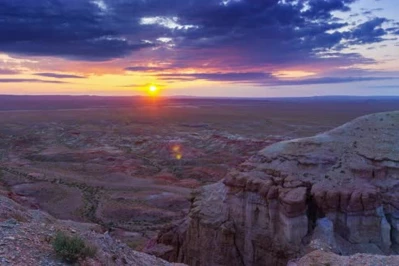
A true Nomadic adventure tour
A true nomadic adventure tour in Mongolia allows you to explore the most beautiful landscapes of central Mongolia and learn the authentic nomadic culture of Mongolia. Spend your time with local nomads, ride through wild nature and discover the historical Orkhon valley. Some other highlights of this trip include the introduction to activities related to horse breeding, a visit to the National history museum, and the central square. You also get to explore activities related to camel breeding and discover the Khongor sand dune, one of the largest and most spectacular sand dunes in Mongolia.

Dog sledding tour in Mongolia
On this dog sled tour, you will be exploring Mongolian nature, the nomadic way of life and also observing the wild flora and fauna in the winter season, in Terelj and Khentii National parks. With an experienced dog team, you will slide on the ice, through endless and peaceful landscapes, in perfect silence, under the sky. This is one of the best ways to discover Mongolia in winter, to approach wild animals and live an incredible adventure in the heart of Mongolian winter accompanied by professional mushers, come and enjoy the serenity and amazing atmosphere of Mongolia!
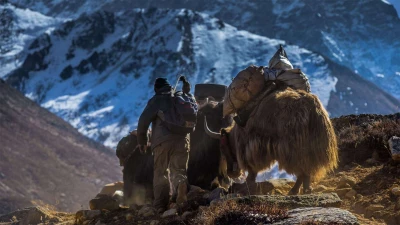
Adventure trek in Mongolia
This trek is an exciting one that exposes you to the steppes and forested valleys in Mongolia. You'll also be introduced to Mongolia's fascinating culture. This trip is perfect for travelers who wish to get a truly authentic experience of the country. Some other highlights of this trip include a taste of the famous Mongolian barbecue, participation in the daily herding activities, learning how to make cheese, yogurt, and alcohol from milk, as well as the breathtaking view of the entire chain of Khangai mountain.

The Yak festival tour
The Yak festival is one of the most important festivals in Mongolia. Yak is considered the most productive animal as its milk and meat is nutritious, fur is warm and it can carry huge loads on its back. Mongolians use the yak for moving and fetching water. The programs in the yak festival are fascinating to see; yak polo, yak race, rodeos, and beauty contest. As always, Mongolians put their best traditional clothes on to come and participate in this festival. There are many surprises and entertaining activities, thus it has become a favorite local event. In addition to the fascinating yak festival, you will explore Ugii lake, and the Tuvkhun temple and relax in the hot springs of Tsenkher.

Into The Heart Of Mongolia
Mongolia as you imagine it! That of the steppes, yurts, and nomads, waiting for you in this 7-day trip to the heart of authentic Mongolia. Our trip starts with discovering the equestrian statue of Chinggis Khaan and meeting Terelj National Park, where the Siberian forests end surrounded by unique rock formations. Then take you to the heart of the Mongolian wilderness, watching mythical Przewalski wild horses. Then we will move through the vast lush steppes where you can observe the many scenes of rural life.

Dog sledding tour in Mongolia
On this dog sled tour, you will be exploring Mongolian nature, the nomadic way of life and also observing the wild flora and fauna in the winter season, in Terelj and Khentii National parks. With an experienced dog team, you will slide on the ice, through endless and peaceful landscapes, in perfect silence, under the sky. This is one of the best ways to discover Mongolia in winter, to approach wild animals and live an incredible adventure in the heart of Mongolian winter accompanied by professional mushers, come and enjoy the serenity and amazing atmosphere of Mongolia!

Adventure trek in Mongolia
This trek is an exciting one that exposes you to the steppes and forested valleys in Mongolia. You'll also be introduced to Mongolia's fascinating culture. This trip is perfect for travelers who wish to get a truly authentic experience of the country. Some other highlights of this trip include a taste of the famous Mongolian barbecue, participation in the daily herding activities, learning how to make cheese, yogurt, and alcohol from milk, as well as the breathtaking view of the entire chain of Khangai mountain.
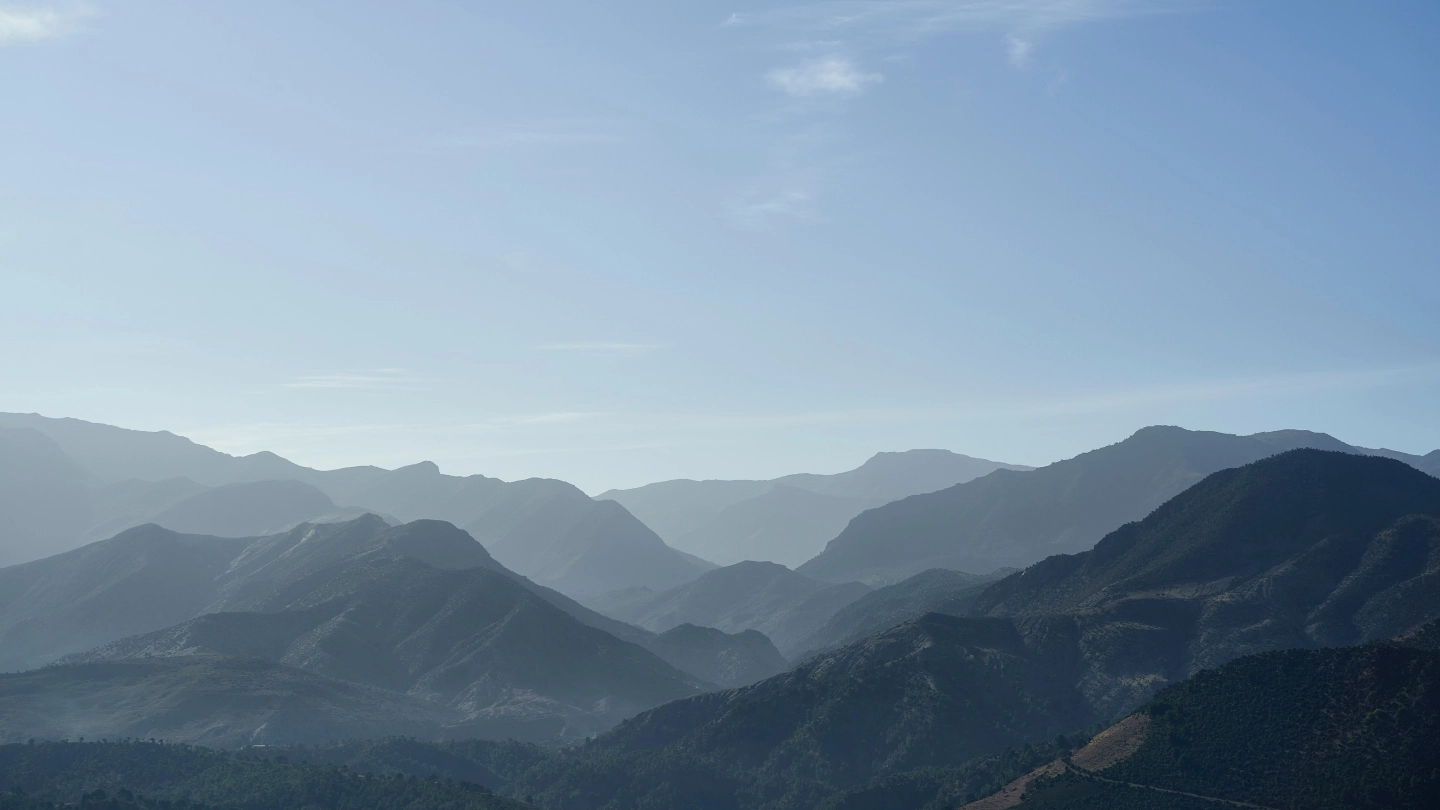
Why Adventure Asia
The company aims to serve soft/medium vacation options to the experienced adventure customer seeking uniquely styled expeditions, rather than traditional tourist-oriented itineraries that are prevalent.
Event Festival
Browse a month-by-month breakdown of suggested itineraries, seasonal activities, climate considerations and festivals.
Cold. Darn cold. Frozen-toes-and-eyelashes cold. Ulaanbaatar can suffer severe levels of air pollution and is best avoided. If properly prepared, this is a good time for short winter walks in Terelj.
Weather and Climate
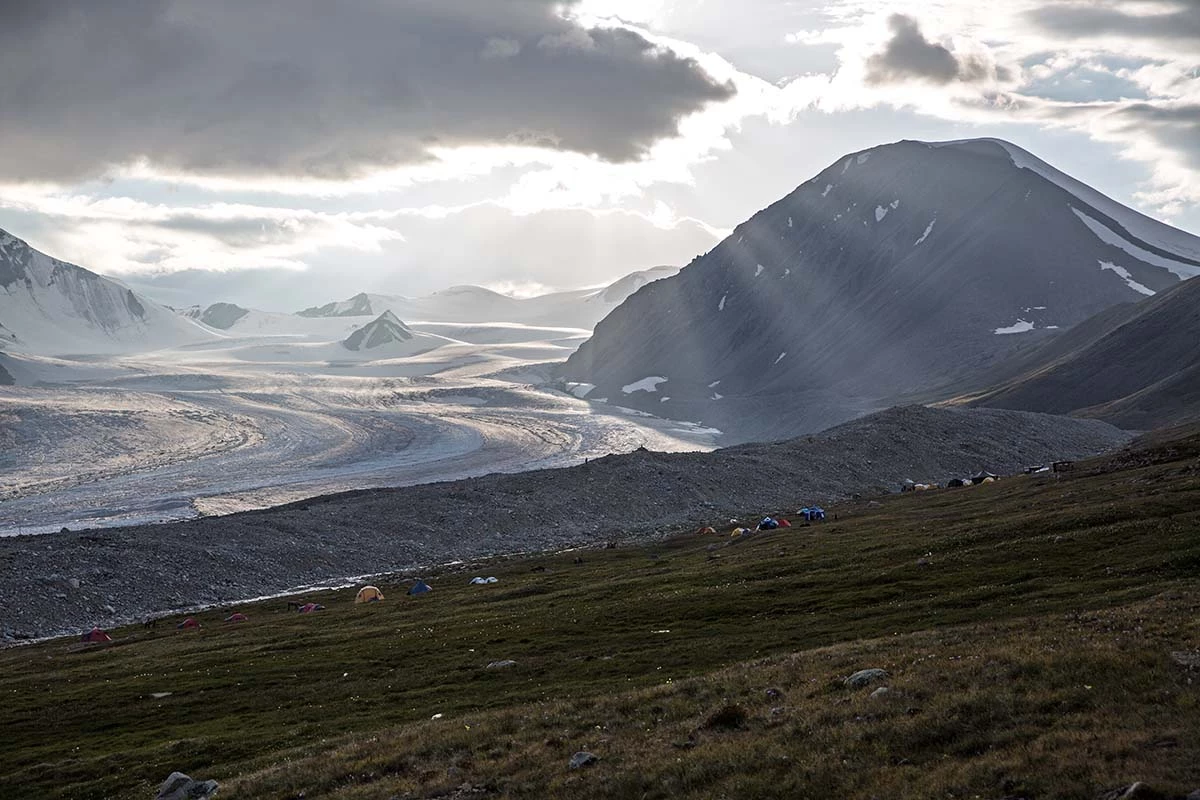
Mongolia is known to the world as country of “Blue Sky of 4 Seasons “. In Mongolia there are 257 sunny days a year, often with clear cloudless skies.
Along with Southern Siberia this part of Asia has a continental climate, with long, cold, dry winters and brief, mild, and relatively wet summers.
The average summer temperature is +21°C, (+65°F) and winter is –20°C, (-13°F). The average rainfall is 200-220 mm.
Winter
November to February are the winter months, temperatures are consistently well below freezing. In January and February the temperature can sink as low as -30°C and will not rise above freezing until April arrives. If a visit is planned at this time then very warm clothes will be a necessity as wind chill is a very significant factor. This season features little but strong winds and snow covered landscape but often days of fine, clear weather will break through where the sun shines down on the snow.
Spring
Springtime breaks in March and April and temperatures are generally still below freezing. The locals consider this to be the worst of the year. After a long winter with harsh weather, livestock will be thin and may be close to death. There will be much hardship throughout the region but particularly amongst the nomads.
Summer
The summer season starts in May and lasts until August with temperatures peaking in July. This is the most popular season for tourists visiting Mongolia. The month of May might still see some snowfall, but the weather is usually good.
Almost all of the rain in Mongolia falls between the months of June and September; this is due to the influence of the Chinese summer monsoon. The rainfall is heaviest in November causing the rivers begin to swell and greenery to return to the landscape.
Autumn
September and October see cooler weather throughout Mongolia. When the autumn sets in, changing colours in the forests of the north provide even more appeal to the already spectacular landscape. At this time of year the weather is known to be extremely variable and clothing should cater to pretty broad conditions. There may be occasional snow in the north however travel is generally unaffected.
Travel FAQs
Essential Information
Mongolia existed in a Soviet bubble for most of the 20th century. Now a generation beyond the fall of communism, Mongolia has emerged as a young democracy with a promising economy based on mining, agriculture and tourism. Some revenue is being funneled back into improving tourist facilities, including a new international airport near Ulaanbaatar. Visas are relatively easy to acquire; a handful of nationalities won’t even require one. Competition among the tour operators has led to better services. Despite the warm welcome, travel can be rough at times, with only basic facilities in many areas. Before You Go Prevention is the key to staying healthy while abroad. A little planning before departure, particularly for pre-existing illnesses, will save trouble later. See your dentist before going on a long trip, carry a spare pair of contact lenses and glasses, and take your optical prescription with you. Bring medications in their original, clearly labelled containers. A signed and dated letter from your physician describing your medical conditions and medications, including generic names, is also a good idea. Western medicine can be in short supply in Mongolia. Most medicine comes from China and Russia, and the labels won’t be in English, so bring whatever you think you might need from home. Take extra supplies of prescribed medicine and divide it into separate pieces of luggage; that way if one piece goes astray, you’ll still have a back-up supply.
Getting There
By Plane Chinggis Khaan International Airport (ULN) is served by several international airlines including Aeroflot, Air China, Korean Air and Japan Airlines. The airport is located 18 kilometres southwest of the city. The national airline MIAT Mongolian Airlines has flights to Beijing-Capital, Berlin-Tegel, Moscow-Sheremetyevo, Seoul-Incheon, Tokyo-Narita, Irkutsk, Osaka-Kansai and Tokyo-Haneda. Aero Mongolia destinations include Hohhot in China and Irkutsk in Russia. By Train Trans-Mongolian railway is one of those journeys that every travelers would like to make sometime during their life. The trans-Mongolian branch takes you through Mongolia to China. For more information and details about possible trains to take check the Trans-Siberian Railway page. There are several direct trains between Ulan Bator (Mongolia) and Beijing (China) every week. It is best to book the tickets in advance because they tend to sell out, especially in the summer time. By Car With your own car it’s actually pretty straightforward to cross borders when your documentation regarding car and insurance is in order. Be sure to have your visa as well before you try to cross. You don’t need a special driving permit or guide like in China. By Bus Minivans shuttle between the train stations of Zamyn-Üüd, on Mongolia’s southern border, and Ereen, the Chinese border town. Mostly travellers cross by train though to China. It is, though, very common to cross to and from Russia by bus, for example on one of the regular buses between Ulaanbaatar and Ulan Ude in Russia.
Getting Around
Although it is possible to rent a car and drive around Mongolian, it is very easy to get lost. Most Mongolian roads are just tire tracks in the grass or desert. There are almost no signs and no mile markers. If a traveler does plan to drive his or her own car make sure to bring a GPS unit, good maps and plenty of spare parts to fix the car in case it breaks down. On the other hand it is very reasonable to rent a car and a driver with a few other people and enjoy Mongolia that way. Many times a guide/cook will be added at no additional cost. By Train The Trans-Mongolian runs from the northern part of the country to the Chinese border. Although it is possible to take the train to a few cities it is really not worth it unless going to the Russian or Chinese border. By Plane Aero Mongolia has flights between Ulan Bator, Altai, Bayankhongor, Choibalsan, Donoi, Hohhot, Hovd, Irkutsk, Ölgii, Oyutolgoi, Ovoot, Ulaangom, Urumqi, while Eznis Airways flies between Ulan Bator and Bayankhongor, Choibalsan, Dalanzadgad, Khovd, Khuvsgul, Ulaangom, Bayan Ulgii, Zavkhan, Oyutolgoi, Ovoot and Hailaar. By Bus There are public buses among the major cities and regional capitals and less so to smaller towns. Although the buses are fine the roads they drive on are not, which can make for a very long trip. It would be wise to keep bus rides to only to places that are connected by paved highway. Remember that assigned seats can be strictly enforced on many buses in Mongolia.
Visa and Permits
A 30-day tourist visa is required for most countries and can be easily obtained at any Mongolian embassy, consulate, consulate-general or honorary consul. Visa on arrival If you are travelling to Mongolia from a country that has no Mongolian consulate, you can pick up a 30-day tourist visa on arrival at the airport in Ulaanbaatar. You’ll need T108,000 (or dollar equivalent) and two passport photos – you should also have a pre-approval letter from an organisation or company in Mongolia. Other visa-free nationalities Citizens of Canada, Germany, Israel, Japan, Laos, Malaysia, Russia, Thailand and Turkey can stay visa-free for up to 30 days; Philippines passport-holders can stay for 21 days without a visa, and Hong Kong citizens can stay visa-free for up to 14 days.
Local Customs
Mongolia is known for its strong nomadic traditions, but life has recently become more urbanised for many citizens in this sparsely populated country. Almost 50% of the population live in or near an urban centre, while the other 50% live a semi-nomadic lifestyle in the countryside; although, settled agricultural communities can be found in rural areas and are growing each year. Despite this change in lifestyle, the rich nomadic heritage remains strong and traditional Mongol songs, dance, stories and clothing are still celebrated, especially during festivals and national holidays. Many Mongolian people are Buddhist – this is evident in the monasteries and temples that populate the urban areas as well as the remote regions. Shamanism is also still in existence in some of the more isolated regions of Mongolia where the proud cultures have been somewhat protected from modern influences. A common thread that links most Mongolians is respect for family and the importance of hospitality. Probably borne from the nomadic way of life, sharing with others and receiving guests with grace is a common theme that recurs in Mongolian society. Harsh conditions, a changeable climate and the uncertainty of nomadic life mean that most Mongolians go out of their way to provide a safe haven for family, friends and guests. It is for this reason that turning down food or not accepting a warm welcome is not advisable.
Events and Festivals
January Cold. Darn cold. Frozen-toes-and-eyelashes cold. Ulaanbaatar can suffer severe levels of air pollution and is best avoided. If properly prepared, this is a good time for short winter walks in Terelj. February Ice Festival February’s Ice Festival is held in the spectacular surroundings of magnificent Khovsgol Lake, attended by the Tsaatan Reindeer people who live on the mountains surrounding the water. Local craftsmen carve blocks of ice from the frozen lake and sculpt intricate decorative panels and images as visitors go on reindeer rides and dog-sledding. Traditional shamanistic ceremonies take place along with dancing, singing, ice-skating, and wrestling contests. Ulaanbaatar Winter Festival The festival features ice ankle-bone shooting, a competition similar to curling, except with ankle-bones (of goats or sheep) replacing the blocks of Scottish granite. Tsagaan Sar (Mongolian Lunar New Year) Mongolia follows the lunar calendar with New Year’s falling somewhere between the end of February and March. Preparations begin a month in advance and involve special foods, gift, and the cleaning of homes. Women make new clothes for the family and a sheep is killed for the feast. On New Year’s Day, everyone watches the sun rise, followed by gift-giving and traditional greeting to family and friends before feasting, drinking and welcoming visitors for the rest of the day. March Khovsgol Ice Festival March is witness to the unique Ice Festival at Lake Khovsgol. This time of year offers the rare opportunity of experiencing one of the deepest winters on the planet with temperatures regularly dropping below -35°C. The wind can make even moderate temperatures seem much colder, so this festival is not for the faint hearted! The enchanting ice festival with horse-sled races, ice rally-driving, wrestling, and tug-o’-war are all held on the frozen lake which offers the perfect light in the afternoon for those interested in photography The Camel Festival. Gloriously, this event is officially billed as the “Thousand Camel Festival” and it certainly lives up to its name! The Bactrian, known as the “ship of the Gobi”, is the undoubted star of the show here in the heart of the desert. The camel herders, with their woolly-coated, double-humped steeds, gather to compete in races and polo competitions. Visitors are encouraged to join the colourful opening parade – yup, on a camel – and it is a unique opportunity to interact with the herders and see their nomadic way of life, up close and personal. Nauryz (Spring/New Life) Festival Nauryz is a new year celebration for the Mongolian Kazakhs, many of whom live in the Bayan Ulgii province. Kazakhs call the month of March ‘Nauryz’ – this is the time of renewed life which comes with the spring. The non-religious Nauryz celebrations take place on 21-22 March, the day of the spring equinox. People believe the more generous the celebration of Nauryz, the happier the year would be. A time to settle rivalries, upset and debts then fill all vessels in the house with milk, airan (plain yogurt), grain, and spring water to gain good yield, fortune and plenty of rain during the coming year. April April sees frequent dust storms and cold snaps, but warmer weather later in the month. If the winter has been severe, livestock will die off rapidly at this time, causing hardship for herders. Melting snow can cause flooding and vehicles are prone to falling through ice. Air pollution in Ulaanbaatar is mostly gone. May Ulaanbaatar Marathon The citizens of Ulaanbaatar take over the streets on a car-free day that includes running races of various distance (5km to 42km) plus a bike parade and other events. Might happen in June. More info at: www.ub-marathon.ub.gov.mn. June Roaring Hooves Festival Often held in a remote part of the country (but starting in Ulaanbaatar), this international music festival (www.roaringhooves.com) features artists from around the world. Mongol Nomadic Naadam Mini naadam for tourists, including horse riding, wrestling and archery, located near Khustain National Park. Check ‘Nomadic Naadam’ on Facebook for dates or check with a tour agent. July Nadaam Festival The Nadaam Festival is held every year from 11 to 13 July (National Holiday) in the capital of Mongolia: Ulan Bator. The National Sports Stadium is the place to be for 3 days long when military parades and sports competitions are held here, with wrestling, arching and horse racing being the most important sports. It is believed that the Nadaam Festival has been a tradition for hundreds of years and nowadays foreigners can enjoy watching traditions in the stadium in Ulan Bator. Altai Nomad Festival This festival in the third weekend in July in Altai Tavan Bogd National Park features traditional Kazakh horse games like kokbar – tug of war with a goat. August Yak Festival The Yak Festival takes place every August in Khorgo National Park around the White Lake. It’s a light-hearted, fun event celebrating the wildly woolly beasts and their impact on the Mongolian lifestyle. Highlights include yak racing, perhaps the slowest races in the world, yak-lassoing and yak polo, during which the ungainly beasts lumber in all directions while their riders make desperate attempts to hit a ball with a large elongated hammer. Great fun is had by all, including the spectators. Danshig Naadam The annual Danshig Naadam and Tsam Dance Festival combines religious ceremonies and traditional naadam sports events, usually in the first week of August. It’s held outside Ulaanbaatar at Khui Doloon Khudag. September Gobi Marathon Go for a 42km run in one of the world’s most inhospitable deserts. Altai Kazakh Eagle Festival One of several eagle festivals held in Bayan-Ölgii. This one is held in Sagsai in late September. Fishing September is a great time for fishing. The weather is good and rivers are calm after the August rains. October Eagle Festival The Eagle Festival in Bayan-Ölgii is an annual highlight. November Winter Horse Festival of Mongolia Mongolia and Mongolian people cannot be imagined without horses. According to their roots, history, culture, and lifestyle, horses are one of the most important parts of them. The true destination, the land of horses, Mongolia offers uncountable activities related to the horses. One of them is the winter horse festival which attracts travelers, adventurers, explorers, photographers, riders and horse lovers. The festival is organized annually in Chingis Khaan’s homeland, today’s Khentii province in the eastern part of Mongolia. Visitors can experience the authentic horse culture of Mongolia and feel the thrilling activities; you can see and capture horse catching, racing, and national art and music performances. Participants and local riders show off their horse skills, including horse training and taming. Beautiful national dressed Mongolians on horseback who feels and proud of their heritages and traditions. If you are a photographer or interested in cultural photography then this is the right attraction for you to take beautiful pictures. Eagle Hunting November is a good time to visit Bayan-Ölgii and watch the eagle hunters in action. December Brace yourself, the Mongolian winter is upon you. Sky Resort near Ulaanbaatar will open (good for beginning skiers). The air pollution in Ulaanbaatar can be unbearable. New Year’s Eve Mongolians celebrate New Year’s Eve enthusiastically, usually with lots of beer, vodka and fireworks.
When is the best time to travel to Mongolia ?
The best time to visit Mongolia is during the Mongolian summer, from the mid of June till last week of August. This is the safest time of the year to travel to Mongolia in terms of weather, sunny days throughout Mongolia and sufficient rainfall to make the steppes lush and green. June and September are both very pleasant times to visit Mongolia. September, autumn is enjoyable, colorful, not hot, and not cold. Nomads have plenty of dairy products and are busy processing milk and preparing for winter. Beautiful countryside of Mongolia is even more beautiful and picturesque with the autumn colors.July is the best time to see the Mongolia Naadam Festival. The best season for Gobi Desert tour: from June to September and October is shoulder season. July to August is the best season to travel to Northern Mongolia and Khuvsgul Lake tour and September is shoulder season. First of October is chance to see Golden Eagle Festival in Altai, Western Mongolia. February is the best time to experience Mongolia winter season.
Do and don’t in Mongolia
Mongols traditionally live on the steppes, breeding horses, just like their ancestor Genghis Khan, so following Western pleasantries will not have the intended effect in Mongolia. And when approaching a nomadic family, or entering a ger, it is easy to violate traditional, religious and superstitious customs. Although minor indiscretions will be tolerated and forgiven: Do Drink from the right hand with the palm up Receive items with the right hand, palm facing up Say hello (sain bainuu) upon arriving (but repeating it when seeing the same person is considered strange to Mongolians) Take at least a sip, or a nibble, of the delicacies offered Pick up everything with an open hand, with the palm facing upwards Hold a cup by the bottom, and not by the top rim If one’s feet contact someone else’s, immediately shake hands with them (failing to do so will be seen as an insult) Don’t Point at anyone with the index finger (it implies disrespect) Refuse a gift (it is considered very rude) Lean against a support column Whistle inside a ger Stand on, or lean over, the threshold Stamp out a fire, or put water or any rubbish on it (fire is sacred to Mongolians) Walk in front of an older person Turn your back to the altar or religious objects (except when leaving) Take food from a communal plate with the left hand Touch other people’s hats Have a long conversation in a foreign language in front of hosts
What money should I take ?
ATMs are widely available. Credit cards are accepted in most hotels, restaurants and shops. Money changers are easily accessible and give better rates compared to hotels.
Further Information
The tögrög has been a quite unstable currency in recent years. IMF assistance from 2017 should help the currency to stabilise. ATMs are everywhere, but only a few accept debit cards with a microchip. Credit cards are widely accepted at shops, hotels and restaurants. Currency The Mongolian unit of currency is the tögrög (T), often spelled tugrik because this reflects the pronunciation more accurately. It comes in notes of T5, T10, T20, T50, T100, T500, T1000, T5000, T10,000 and T20,000. (T1 notes are basically souvenirs.) The highest-value note is worth around US$8. Money changers Banks and exchange offices in Ulaanbaatar will change money with relative efficiency. Banks in provincial centres are also fine; they change dollars and give cash advances against debit and credit cards. Payments When paying out large sums of money (to hotels, tour operators and sometimes airlines), it’s fine to use either US dollars or tögrög; the merchant will act as a money changer, though the rate will not generally be very good. Other forms of currency aren’t usually accepted, although the euro is probably the next best. Cash offers the best exchange rates and you won’t be paying any commission charge, but for security purposes you can also use debit cards. Travellers cheques These are no longer accepted anywhere in Mongolia. Leaving Mongolia Remember to change all your tögrög when leaving the country, as it’s worthless elsewhere. Depreciation Bear in mind that the tögrög fluctuates widely against the dollar, and local businesses often raise prices to keep up with the changes. Prices are likely to adjust upwards if the currency continues to devalue.
What's your refund policy ?
Below is our cancellation and refund policy: 🔸 60 days prior to arrival date: No cancellation charge for the land cost. We guarantee 100% of the land cost back. The airline cancellation fees are applied according to the airline's policy. 🔸 59 - 30 days prior to arrival date: 5% cancellation charge + airfare cancellation fees 🔸 29 - 15 days prior to arrival date: 10% + airfare cancellation fees. 🔸 14 - 8 days prior to arrival date: 40 + airfare cancellation fees. 🔸 7 days prior to arrival date: 100% 🔸 No show: 100% Please note that the domestic flight tickets in the package are non-refundable



